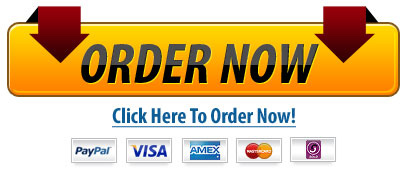Class Representation in Television
(Class Representation in Television)
https://drive.google.com/open?id=1RkRuy-NZRCExHFcS…(reading)
This week’s essay asks you to analyze a TV show using one of Kendall’s frames. Find a TV show you are familiar with which you feel you could analyze using Kendall’s ideas.
Now, write the following elements of your essay:
1. Write a level-3 thesis that explains how the show represents class, and how that is significant.
2. A well developed TEAL paragraph that describes how class is represented in your TV show. Reference moments from specific episodes rather than speaking in generalities. (This could be one of the body paragraphs of your essay)
3. Another TEAL paragraph that explains how this show exemplifies one of Kendall’s frames (in RR pp. 425-30):
- consensus framing
- admiration framing
- emulation framing
- thematic framing
- episodic framing
- caricature framing
- middle-class values framing
Be sure to explain the frame and then explain in some detail how this show is an example of that frame.
4. Include full citations for both Kendall and the TV show that you will put on the Works Cited page, using the lesson in this week’s module as a guide.
The deadline for your submission is Thursday June 28th at 11:59 pm.
– – – – – – – – – – – – – – – – – – – – – –
Once you have been assigned a partner for peer response, read their work and respond:
- How strong is the thesis? Is it a level-3 thesis?
- How strong are topic sentences?
- Does the evidence match the topic sentences? Is there enough explanation?
- How strong is the analysis?
- Do they link back to the thesis?
- Are the Works Cited entries correct?
(Class Representation in Television)
1. Level-3 Thesis:
A level-3 thesis is analytical and complex, explaining both how and why class is represented in the show. Here’s an example thesis statement:
In the TV show The Office, class is represented through the contrasting lives of the office employees, highlighting the disparity between the working-class workers and the middle-class management. This dynamic is significant as it reflects the social tensions in modern workplaces and critiques the hierarchical structure of corporate America, ultimately revealing how class shapes identity, relationships, and aspirations in the workplace.
2. TEAL Paragraph (Class Representation in The Office):
Topic Sentence: In The Office, class is portrayed through the relationships and social interactions between employees at Dunder Mifflin, particularly through the lens of working-class employees and their interactions with middle-management.
Evidence: For example, in Season 3, Episode 2, “The Convention,” Jim Halpert, a sales representative, contrasts sharply with his boss, Michael Scott, in terms of lifestyle. Jim is depicted as laid-back, witty, and relatable, while Michael is awkward, self-absorbed, and displays a constant need to project authority, even when he is financially insecure. This scene shows how class differences manifest not just in income but also in social behavior and attitudes.
Analysis: The dynamic between Jim and Michael illustrates the tensions between the working-class employees and their middle-class supervisors. Jim’s easygoing demeanor contrasts with Michael’s desperate desire to be admired by his subordinates, underscoring the absurdity of corporate hierarchies. These class distinctions not only affect workplace dynamics but also influence personal aspirations, as we see in the later seasons, where Jim’s growing dissatisfaction with his job prompts his eventual departure for a higher-paying career in sports marketing.
Link: Through moments like these, The Office uses its comedic setting to highlight the significance of class in shaping not only professional lives but also the personal dynamics that unfold within the office.
3. TEAL Paragraph (Kendall’s Framing – The Office and Middle-Class Values Framing):
Topic Sentence: The Office exemplifies Kendall’s “middle-class values framing” by consistently depicting the aspirations, values, and behaviors associated with middle-class characters, particularly Michael Scott, who strives to present himself as a successful, upwardly-mobile individual.
Evidence: In the Season 2 episode “Office Olympics,” Michael throws an elaborate competition to raise morale in the office. Despite his apparent lack of leadership skills, he clings to the belief that fun and motivation are directly tied to material success and corporate acknowledgment. This is a clear reflection of middle-class values that equate success with external recognition and achievement.
Analysis: This framing portrays Michael’s desire to promote middle-class values, such as individual success and self-sufficiency, even though his managerial techniques are ineffective. His portrayal as someone who desperately seeks approval and validation through material means exemplifies the tension between aspirational middle-class ideals and the reality of his role in the company. Michael’s actions reflect the internalized middle-class values of achievement, social mobility, and status, despite his actual position within the office hierarchy.
Link: By framing Michael’s character through these middle-class values, The Office critiques not only corporate culture but also the social constructs of success that permeate American society.
4. Works Cited:
- Kendall, D. (2019). Framing Class: Media Representations of Wealth and Poverty. Kendall/Hunt Publishing Company.
- The Office. (2005–2013). NBC.
Peer Response Guidelines:
When responding to your partner’s work, consider the following:
- Thesis: Is it a level-3 thesis? Does it explain both how and why the class representation is significant?
- Topic Sentences: Are the topic sentences clear and specific? Do they tie back to the thesis?
- Evidence and Analysis: Does the evidence directly support the thesis? Is there enough analysis to explain how the evidence contributes to understanding the class representation in the show?
- Link to Thesis: Does each paragraph link back to the thesis statement and the central argument of the essay?
- Works Cited: Are the citations formatted correctly and consistent with the assigned style?
Do you need a similar assignment done for you from scratch? Order now!
Use Discount Code "Newclient" for a 15% Discount!



